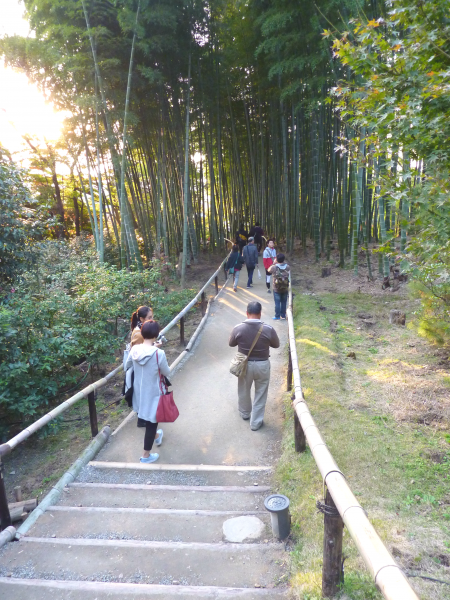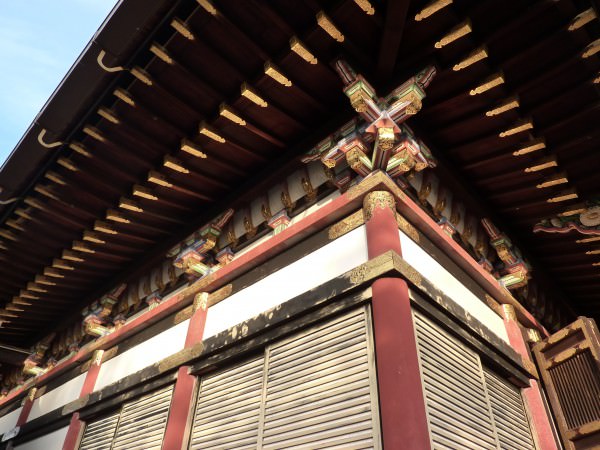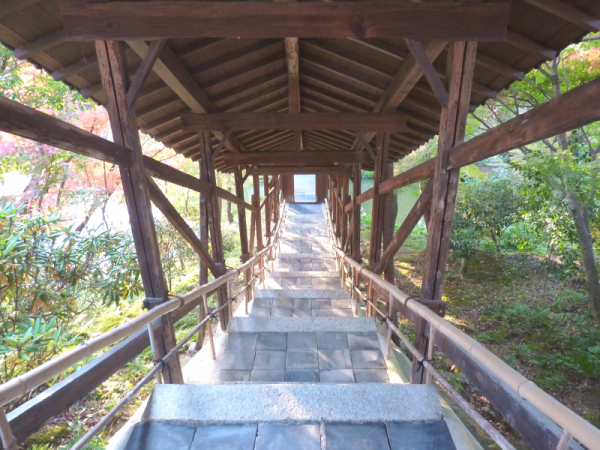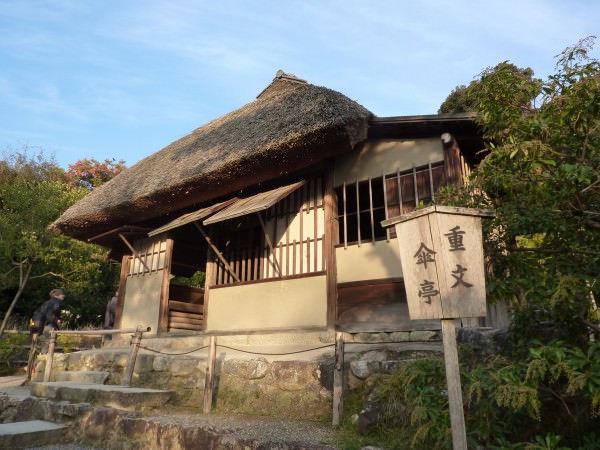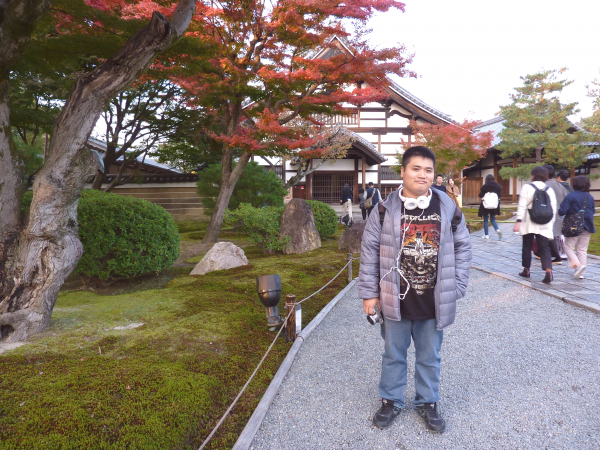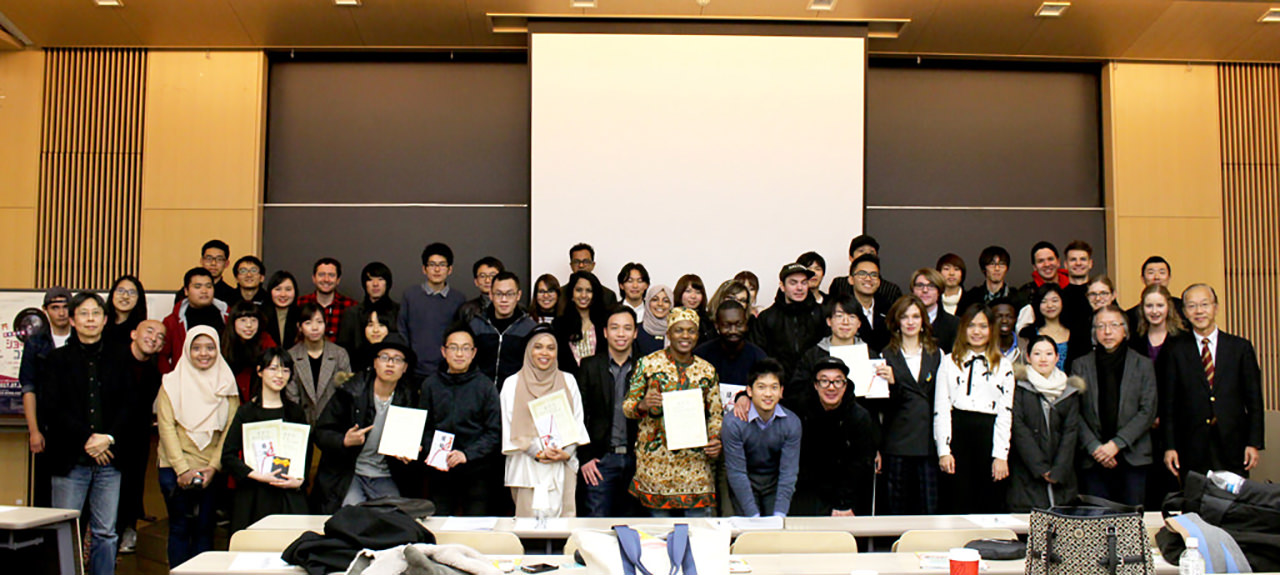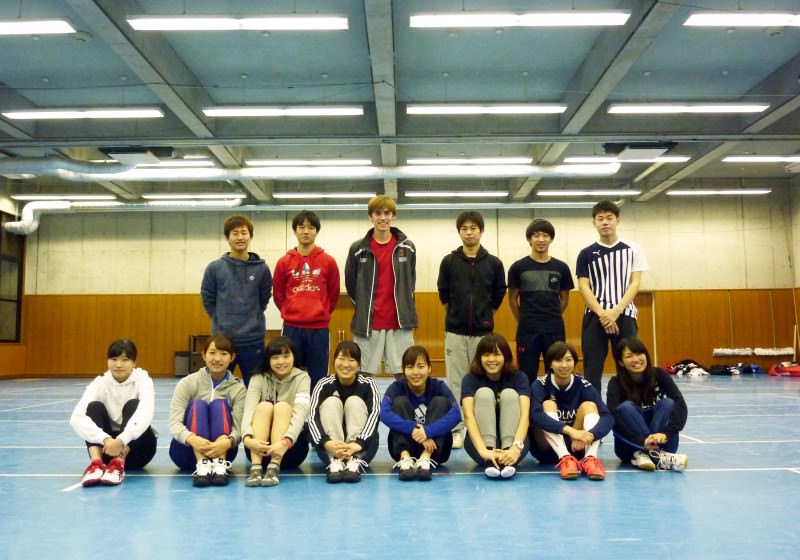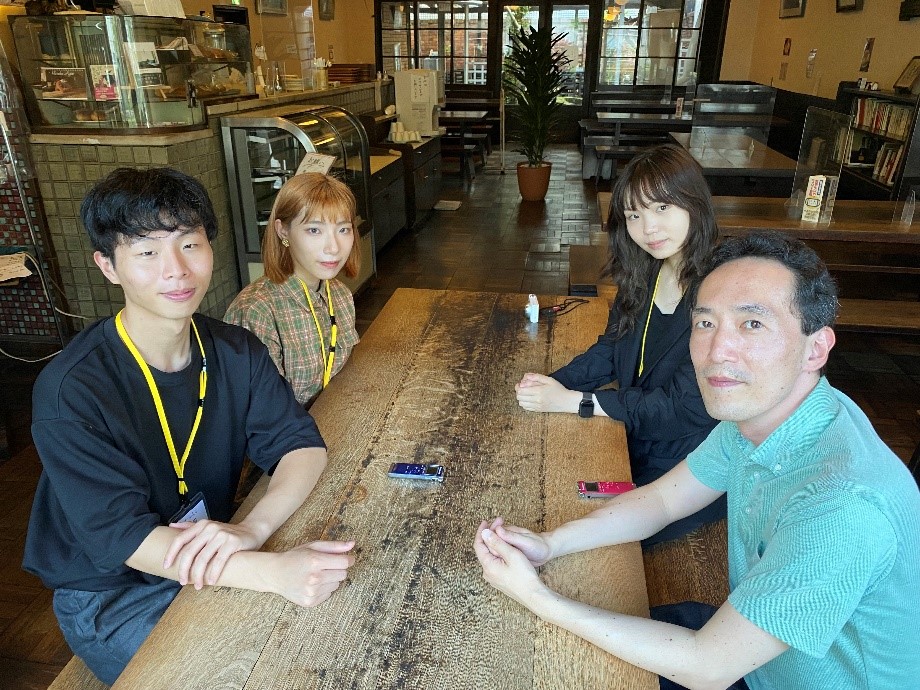A trip through history in Kodai-ji Temple’s extensive gardens
2017.02.05
A city steeped in history
Kodai-ji’s grounds are deceptively large, and wind up a hillside covered with a rustling bamboo forest. Halfway up the steps of this hill is the mausoleum of Nene, Toyotomi Hideyoshi’s wife. The mausoleum is known as Otama-ya, and has remained untouched since it was constructed in 1605. Within are wooden carvings of Hideyoshi and Nene, enshrined here side by side over Nene’s grave as a couple that passed through extremely turbulent times.
As it turns out, Mai has studied the Sengoku Period in depth, too.
“Many of the military commanders of the Sengoku Period came from Aichi Prefecture,” he explained. “The part of Vietnam that I’m from is sort of similar to Aichi in that way: it’s located in the center of the country, and many of Vietnam’s kings were born there. I guess I feel a kind of affinity for Aichi because of that.
I also like the Sengoku Period because there are so many interesting people that appear. My favorite is the story of the battle between two daimyo, Takeda Shingen and Uesuki Kenshin. They fought each other for a long time, because both of them were really clever, and it was hard for one to defeat the other. The samurai philosophy is really fascinating to me.
Oda Nobunaga is another really interesting figure for me: he’s power itself, a ferocious leader. Toyotomi Hideyoshi, who’s connected to this temple, was really skilled at using people, at gaining their trust and getting into their heads. Date Masamune up in the Tohoku region was really cool, too—he was known as the “one-eyed dragon” for his missing eye.
To be honest, I didn’t learn everything I know about these people by studying. I first became interested by playing video games and reading manga about the Sengoku Period.”
Not all study begin with history books!
Mai’s eyes light up when he talks about history. We wondered if there were any other historical periods he’s interested in.
“I really like the Bakumatsu Period (end of the Edo Period, and final days of the Tokugawa Shogunate). Those kind of unsettled periods are the most interesting for me. Another favorite is the history of the “Shinsen-gumi” (The “new squad,” a special police force sent to Kyoto to protect members of the shogunate there). I like Captain Okita Soji, who was a great swordsman, and the commander Hijikata Toshizo. The reason, if I’m honest, is that I first heard about them as characters—they were apparently the inspiration for the manga Gintama. I love the characters in Gintama. They may be different from the actual historical figures, but they’re really cool. (laughs)
There’s a manga called Rurouni Kenshin—it’s called Samurai X in English. It takes place more towards the beginning of the Meiji Period, but it’s about a character who is a rival to the Shinsen-gumi. It’s a really popular manga outside of Japan, too. I think history has a really central place in a lot of Japanese culture today.
Out and about in Kyoto
Leaving the mausoleum area, we walked with Mai further up the hill behind Kodai-ji Temple. At its crest are a pair of tea houses, known as Kasatei (the “Umbrella Pavilion”) and Shiguretei (the “Rain Shower Pavilion”). Both as recognized as Important Cultural Properties of Japan.
“They’re definitely very wabi-sabi, aren’t they?” Mai comments, referring to the traditional Japanese aesthetic that embraces imperfection and impermanence.
Mai snaps a few more photos in the fading light. Always camera in hand, we wondered what other parts of Kyoto he likes to visit on a day out.
“I like quiet places where I can just take it easy,” he answered. “Places like the Kamo River or Arashiyama. There are some pretty places in Northern Kyoto, too—there’s a spot with a waterfall up there, and Mount Hiei. There are places I haven’t been to yet, either, like Katsura, just south of Kyoto. I’ve heard the Katsura River there is pretty.
Personally, I prefer rice fields and rural scenery—nature.
I also like Kyoto’s Kita-oji and Kitayama. The scenery is nice, and it’s quiet, too. There are many crowds up there. I like the feeling of the town. It’s easy to go places by yourself if you’re going to take pictures.”
Kyoto is full of serene places like Kodai-ji Temple. You’d be surprised at the long history many of them have, and the number of places you might recognize from books and manga—just ask Mai!






